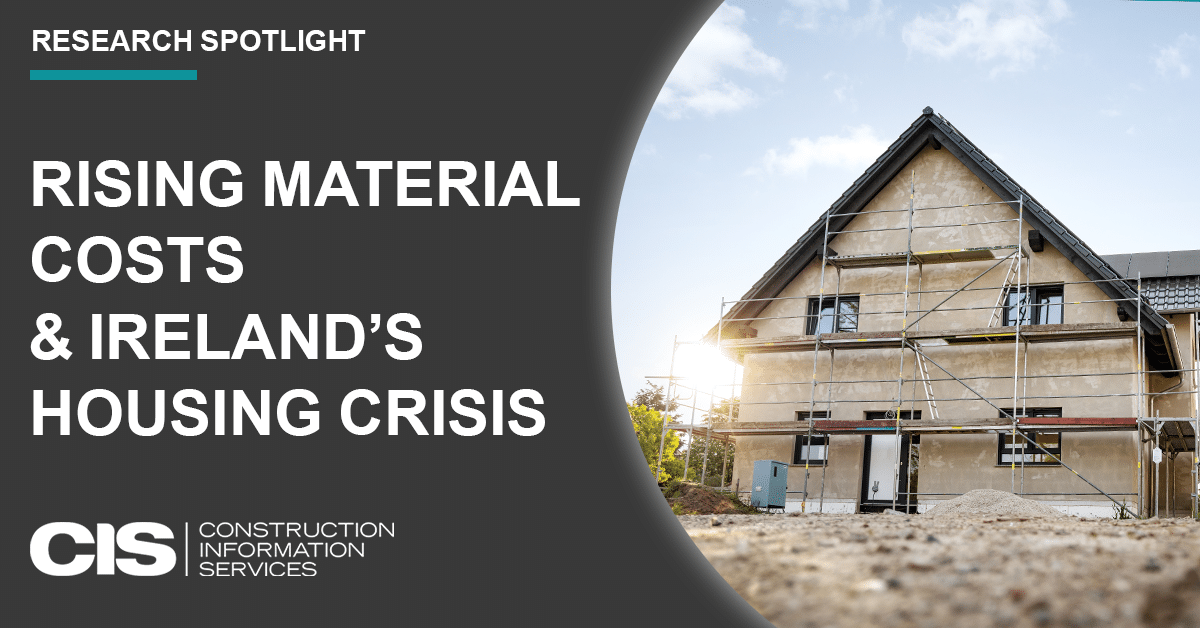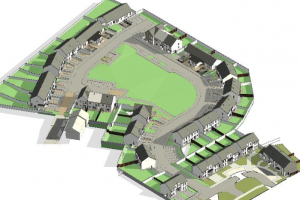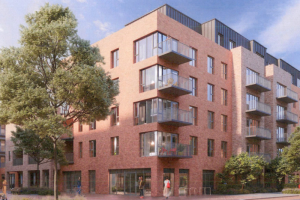Introduction
Ireland’s construction sector, crucial for economic growth and societal well-being, faces significant challenges that directly impact the nation’s housing crisis. The escalating costs of construction materials, a phenomenon felt globally, have particularly severe ramifications in Ireland’s market, characterised by high demand and insufficient supply. This detailed analysis delves into the dynamics behind these rising costs and their effects on the housing sector by integrating recent planning application data to provide a comprehensive view of how these factors interact within the broader landscape of Ireland’s housing market. Understanding these dynamics is essential, as the availability and affordability of housing are critical indicators of a country’s economic health and social stability.
Global Supply Chain Disruptions and Material Costs
The COVID-19 pandemic has profoundly disrupted global supply chains, affecting the cost of essential construction materials worldwide. Ireland, like many other countries, has experienced significant effects, particularly in the availability and pricing of key materials such as timber, concrete, and steel. These disruptions have led to notable delays in material deliveries and substantial price increases, exacerbating the challenges in the construction industry.
Timber
Timber, a critical material in residential construction, has experienced dramatic price fluctuations. A surge in DIY projects during the pandemic, coupled with an increase in construction activity, post lockdown, drove demand to unprecedented levels. Supply constraints due to lockdowns and reduced production capacity have sharply increased timber prices. Ireland’s reliance on imports, particularly from countries like Canada and Sweden—where external factors such as forest fires and environmental policies impact timber supply—further exacerbates the situation.
Concrete and Cement
Concrete and cement prices have surged due to the energy-intensive nature of cement production and global energy price increases. Environmental regulations aimed at reducing carbon emissions have led to higher costs for manufacturers, which are often passed on to consumers. In Ireland, where construction activity remains robust, the demand for concrete has outstripped local supply capabilities, pushing prices upward.
Steel
Steel, essential for structural frameworks and reinforcing, has seen its prices soar due to a combination of factors. Increased global demand, particularly from China, and reduced production during the pandemic’s initial phases have led to soaring costs. Geopolitical tensions and trade policies affecting major steel-producing countries have introduced significant volatility and uncertainty into the market.
Planning Applications and Construction Impacts
CIS housing data for the past 2 years indicates some interesting trends within the residential sector. Figures derived from the CIS Insights tool shows that in 2022 over 1,700 residential planning applications (ex. Self-build) were lodged for planning, compared to 1,400 applications lodged in 2023. These submissions accounted for 90k units in 2022 compared to 47k units lodged for planning in 2023. The volumes of residential planning applications approved planning in both 2022 and 2023 were similar, both in and around the one thousand marks. However, the volume of residential units approved planning in 2022 was just under 42k units, compared to just under 50k units in 2023. On site activity in 2022 showed that a total of 680 residential projects commenced on site in 2022 compared to 787 projects started in 2023. The volume of residential units started in 2022 was 25.5k units, compared to just under 30k units in 2023. 2024, has started off slowly, with significantly lower volume of units and projects being applied for and approved, but commencement activity so far in 2024 has seen a massive surge.
Economic Implications
The rising cost of construction materials and the resulting delays in project commencements exacerbate the housing shortage, inflating prices and making affordable housing increasingly out of reach. Delays not only affect housing availability but also have broader economic implications. Construction projects are significant drivers of employment and economic activity. When projects are delayed, it can lead to job losses and reduced economic growth, impacting various sectors beyond construction.
Moreover, the uncertainty in the construction sector can deter investment, both domestic and foreign. Investors seeking stability and predictable returns may look elsewhere, depriving the Irish economy of much-needed capital for housing and infrastructure projects.
However, there has been some recent positive news. CIS data showed that over 18.5k residential units started in the month of April this year, up 600% from the previous period in 2023. This would suggest that there will be a surge of houses delivered in the next 18 months.
Addressing the Challenges
To mitigate these issues, a multi-faceted approach is necessary. This could involve diversifying supply sources to reduce dependency on imports, investing in local production capacities for critical materials, and exploring alternative materials and construction methods that are less resource intensive. Government interventions such as subsidies for essential materials or support for the development of sustainable local industries could also play a crucial role in stabilizing material costs and ensuring the timely completion of construction projects.
Conclusion
The complex relationship between construction material costs and Ireland’s housing crisis forms a multifaceted challenge that demands a strategic, comprehensive response. This analysis, supplemented by recent planning application data, underscores the need for proactive government measures to stabilize material costs and ensure the timely completion of construction projects. By integrating policy measures, market adaptations, and collaborative stakeholder engagement, Ireland can progress toward a more stable and affordable housing market. This path forward will require innovation, cooperation, and a commitment to addressing both the economic and environmental implications of construction and housing development. The state of the housing market in Ireland is intricately linked to global economic forces, local industry capabilities, and policy decisions, necessitating not just adaptation to changing market conditions but proactive measures to ensure sustainable growth of the construction sector and the availability of affordable housing for all. However, there has been some recent positive news. CIS data showed that over 18.5k residential units started in the month of April this year, up 600% from the previous period in 2023. This would suggest that there will be a surge of houses delivered in the next 18 months.
If you have any queries about the contents of this report, please contact [email protected].
If you would like a free demo of our lead generation platform or to learn more about the depth of our data, please arrange a demo by calling +353 1 2999 200 or email [email protected]
Written by Adam Dargan, CIS Research Executive








 Download CIS reports by clicking the button below.
Download CIS reports by clicking the button below.





